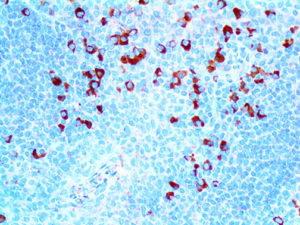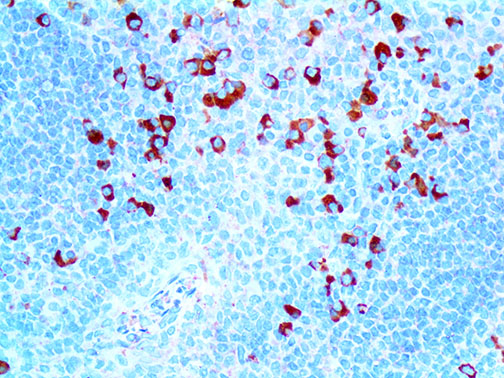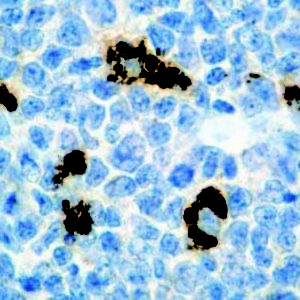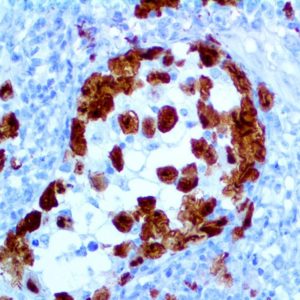
IHC of Kappa on an FFPE Tonsil Tissue
| Intended Use | For In Vitro Diagnostic Use | |||||||||||||||||||||||||||||||||||
| Summary and Explanation | Kappa detects surface immunoglobulin on normal and neoplastic B-cells. In paraffin-embedded tissue, Kappa exhibits strong staining of kappa-positive plasma cells and cells that have absorbed exogenous immunoglobulin. When studying B-cell neoplasms, the determination of light-chain ratios remains the centerpiece. This is sound reasoning because most B-cell Lymphomas express either kappa or lambda light chains, whereas reactive proliferations display a mixture of kappa and lambda-positive cells. If only a single light-chain type is detected, a lympho-proliferative disorder is very likely. Monoclonality is determined by a kappa-lambda ratio greater than or equal to 3:1, a lambda-kappa ratio greater than or equal to 2:1, or a monoclonal population of 75% or more of the total population. | |||||||||||||||||||||||||||||||||||
| Antibody Type | Mouse Monoclonal | Clone | BSB-58 | |||||||||||||||||||||||||||||||||
| Isotype | IgG1/K | Reactivity | Paraffin, Frozen | |||||||||||||||||||||||||||||||||
| Localization | Cytoplasmic | Control | Tonsil, Lymph Node | |||||||||||||||||||||||||||||||||
| Presentation | Kappa is a mouse monoclonal antibody derived from cell culture supernatant that is concentrated, dialyzed, filter sterilized and diluted in buffer pH 7.5, containing BSA and sodium azide as a preservative. | |||||||||||||||||||||||||||||||||||
| Availability |
| |||||||||||||||||||||||||||||||||||
| Note: For concentrated antibodies, please centrifuge prior to use to ensure recovery of all product. | ||||||||||||||||||||||||||||||||||||




